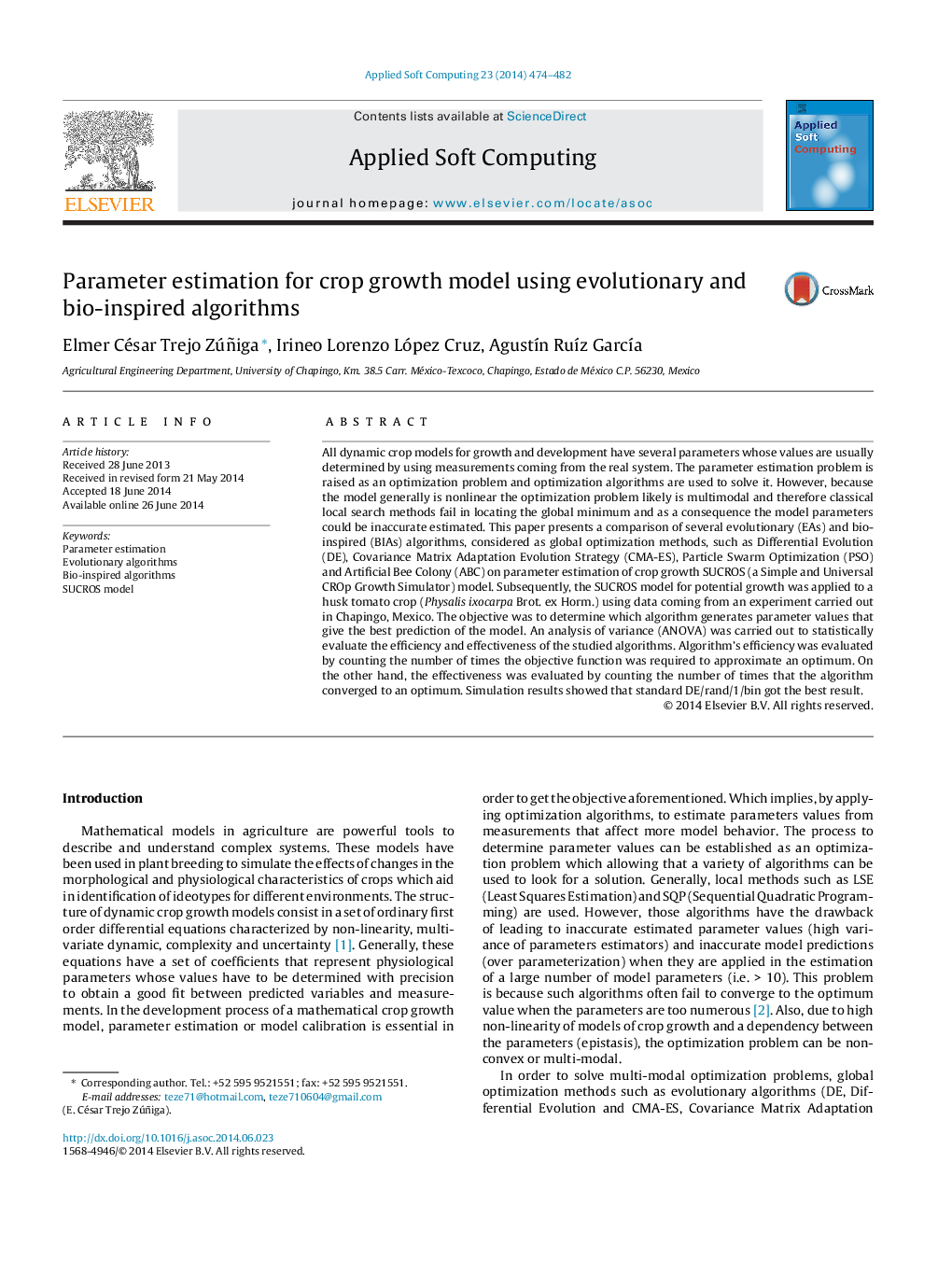| کد مقاله | کد نشریه | سال انتشار | مقاله انگلیسی | نسخه تمام متن |
|---|---|---|---|---|
| 495428 | 862826 | 2014 | 9 صفحه PDF | دانلود رایگان |
• An approach based on evolutionary and bio-inspired algorithms is proposed for solving the parameter estimation problem in crop growth dynamic models.
• Differential Evolution algorithm showed the best performance in solving the parameter estimation problem of a dynamic crop growth model.
• A statistical analysis and ANOVA were applied to quantitatively evaluate the efficiency and effectiveness of Differential Evolution, CMA-ES, PSO, ABC and LSE algorithms.
All dynamic crop models for growth and development have several parameters whose values are usually determined by using measurements coming from the real system. The parameter estimation problem is raised as an optimization problem and optimization algorithms are used to solve it. However, because the model generally is nonlinear the optimization problem likely is multimodal and therefore classical local search methods fail in locating the global minimum and as a consequence the model parameters could be inaccurate estimated. This paper presents a comparison of several evolutionary (EAs) and bio-inspired (BIAs) algorithms, considered as global optimization methods, such as Differential Evolution (DE), Covariance Matrix Adaptation Evolution Strategy (CMA-ES), Particle Swarm Optimization (PSO) and Artificial Bee Colony (ABC) on parameter estimation of crop growth SUCROS (a Simple and Universal CROp Growth Simulator) model. Subsequently, the SUCROS model for potential growth was applied to a husk tomato crop (Physalis ixocarpa Brot. ex Horm.) using data coming from an experiment carried out in Chapingo, Mexico. The objective was to determine which algorithm generates parameter values that give the best prediction of the model. An analysis of variance (ANOVA) was carried out to statistically evaluate the efficiency and effectiveness of the studied algorithms. Algorithm's efficiency was evaluated by counting the number of times the objective function was required to approximate an optimum. On the other hand, the effectiveness was evaluated by counting the number of times that the algorithm converged to an optimum. Simulation results showed that standard DE/rand/1/bin got the best result.
Figure optionsDownload as PowerPoint slide
Journal: Applied Soft Computing - Volume 23, October 2014, Pages 474–482
